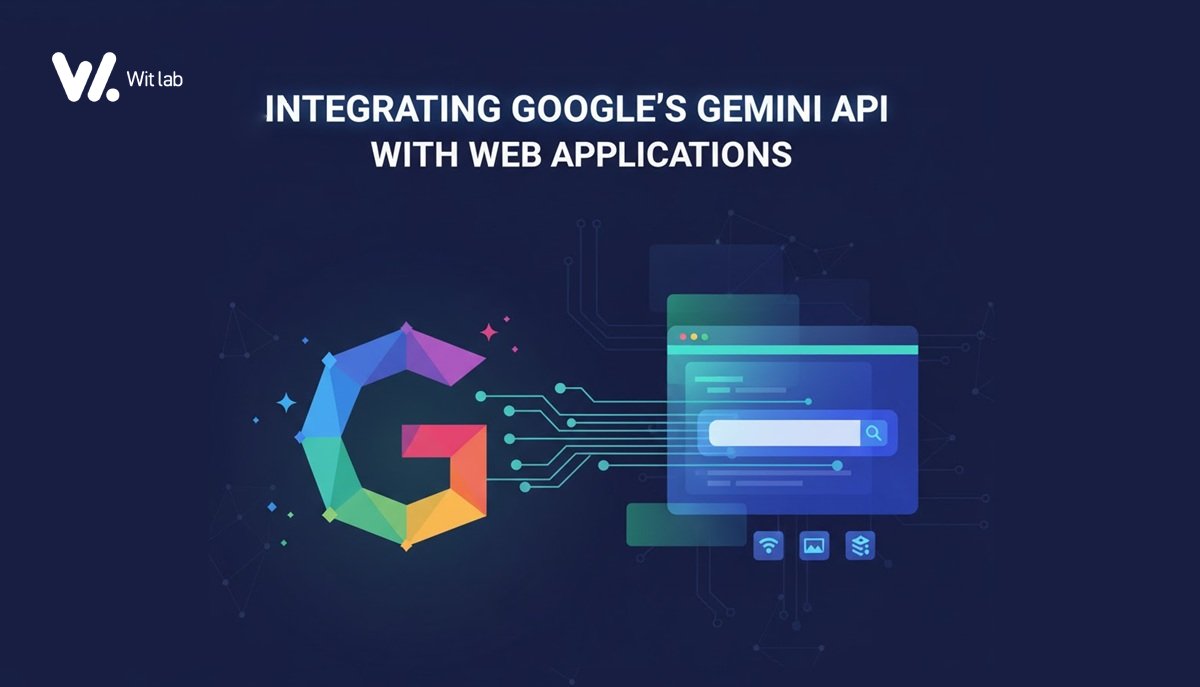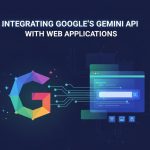
- 2025-10-24
- posted by Aung Nyi Thit
- System
Integrating Google's Gemini API With Web Application
The digital landscape is constantly evolving, and for businesses to stay competitive, leveraging cutting-edge AI is no longer optional. It's essential. Google AI Studio is your portal to this future. It's an intuitive, web-based platform designed for developers and innovators to rapidly prototype and build with Google's most advanced generative AI models.
Gemini models are truly multimodal, meaning the same fundamental model can seamlessly handle and generate text and image content, among other data types. This power unlocks unprecedented business use cases, from intelligent content creation to dynamic user experiences.
Getting Started: Your Gemini API Key
The single most critical component for integrating Gemini's power into your business application is the API key. Think of the API key as a unique, secure password that proves to Google’s servers that your application is authorized to use the Gemini models and that the usage should be charged to your account.
Generating Your API Key
- Your AI Hub: Google AI Studio is a free, web-based platform. It's where you go to experiment with the Gemini models, craft your first prompts, and, most importantly, manage your API keys.
- One-Click Access: After signing in with your Google account, you will find a clear option to generate an API key.
- Security First: Once generated, you must treat this key like a password. If it falls into the wrong hands, it could be used for unauthorized access. The key is what allows your application to talk to the AI, so keep it secret.
Secure Integration in Laravel with REST API
For a robust PHP application like one built on Laravel, securely managing and using your API key is important. Before using the REST API, you need to learn the official Gemini API documentation.
Environment Variable: The best practice is to store your key as an environment variable (e.g., in your .env file). This keeps it out of your main codebase and ensures it's not accidentally exposed.
RESTful Access: When your Laravel application needs to communicate with the Gemini API, perhaps from a controller or service layer, you'll use an HTTP client to make a REST API call.
Authentication: The API key is typically passed in the request, either as a query parameter in the API endpoint URL or as a secure HTTP header. This authenticates your request, allowing it to access the generative models.
Using with Node package
While your Laravel backend handles the core logic, integrating with the Gemini API is often done via the official client library, such as the @google/genai npm package for JavaScript environments (e.g., in a Node.js service or for client-side functionality).
This package simplifies the entire interaction. It handles the complexities of network requests, model configuration, and response parsing, allowing your team to focus solely on building value-added features for your business.
Precision and Control: Prompting and Configuration
For a business-focused application, you need reliable, predictable AI output. Gemini provides powerful tools for achieving this, moving beyond simple requests to complex, guided generation.
Advanced Prompting Techniques
- System Instructions: Think of this as giving the AI its role and rules. You can tell the model to "Act as a professional marketing copywriter" or "Only respond in a positive and helpful tone." This is crucial for maintaining brand voice and ensuring high-quality, on-brand content.
- Structured Output: This is a game-changer for business logic. Instead of receiving free-form text, you can instruct the model to return a response in a specific, machine-readable format, such as JSON. This makes it easy for your Laravel application to read the AI's output and use it directly to populate a database, update a product listing, or drive a user interface.
GenerationConfig: Fine-Tuning Your Output
The GenerationConfig object gives you granular control over the model's creative process:
maxOutputTokens: This sets a limit on the response length. For business applications requiring concise summaries, tweets, or fixed-length fields, this parameter ensures the output never exceeds your system's capacity or design constraints.Temperature: This controls the randomness or creativity of the output. A low temperature (closer to 0) yields predictable, deterministic, and factual responses (ideal for summarization or data extraction). A higher temperature (closer to 2) results in more diverse, creative, and imaginative content (perfect for brainstorming or marketing copy).
Transforming Business: Web Application Use Cases
Integrating the Gemini API into your Laravel-powered web application can dramatically elevate your business capabilities:
Marketing & Content
- Gemini API Use Case—Automated Ad Copy & Blog Drafts: Generate five variations of an Instagram ad and a 500-word blog post outline based on a product image and a short description.
- Business Value—Massive time savings and accelerated content velocity.
E-Commerce
- Gemini API Use Case—Dynamic Product Descriptions: Upload a single product image and generate a detailed, SEO-optimized text description and five relevant feature bullet points.
- Business Value—Massive time savings and accelerated content velocity.
Customer Service
- Gemini API Use Case—AI-Powered Support Agents: Use Gemini to understand complex, multi-modal customer inquiries (e.g., text plus a screenshot of an error) and generate instant, highly accurate draft responses.
- Business Value—Faster resolution times and improved customer satisfaction.
Internal Tools
- Gemini API Use Case—Data Extraction and Structuring: Upload a photo of a business receipt or a complex report and use Structured Output to extract key data (e.g., amounts, dates, vendor names) into a JSON object for database entry.
- Business Value—Error reduction and automation of tedious data entry.
By leveraging the power of Gemini and the development ease of Google AI Studio, your business can build intelligent, automated, and dynamic web applications that drive efficiency and growth.
Ref:





